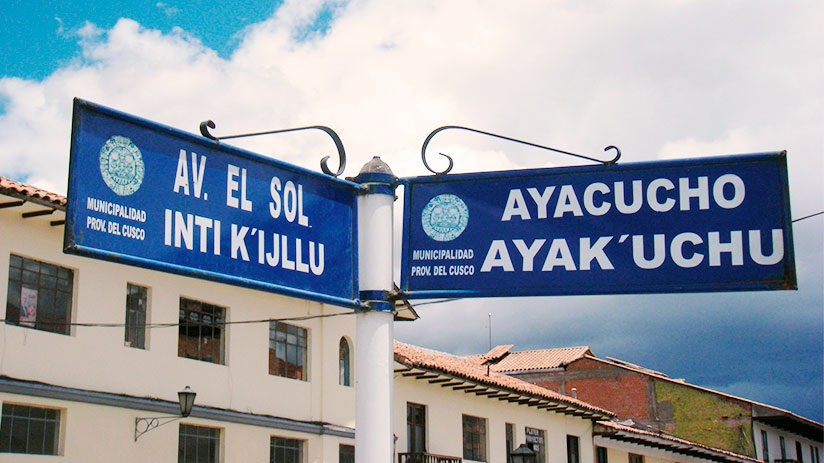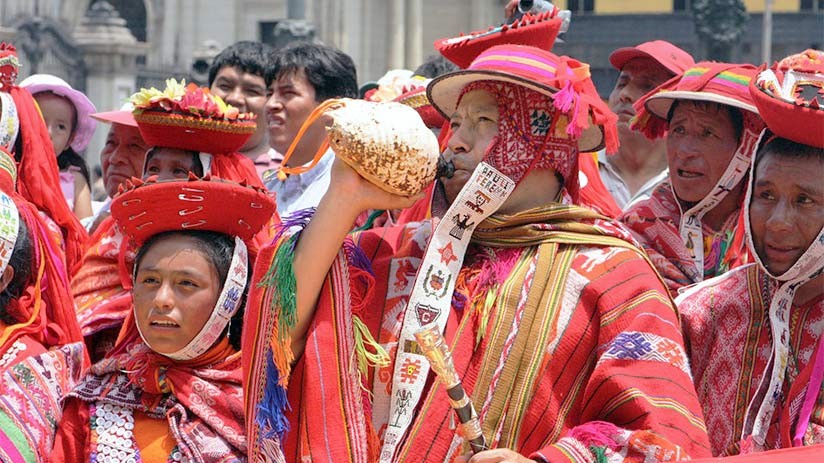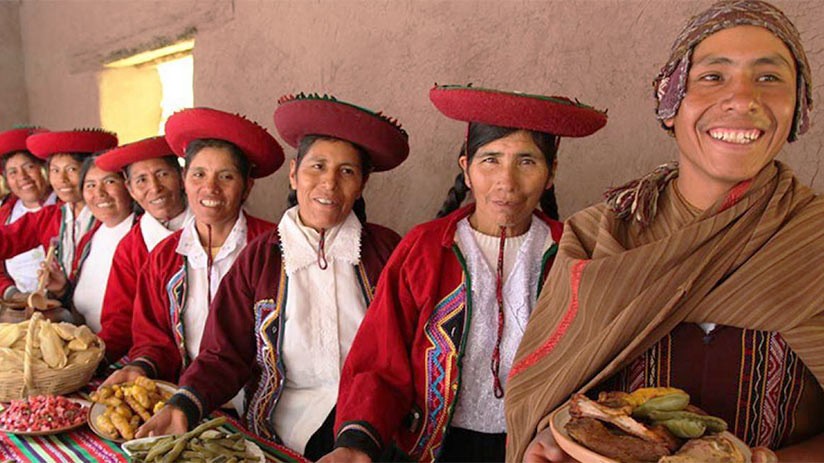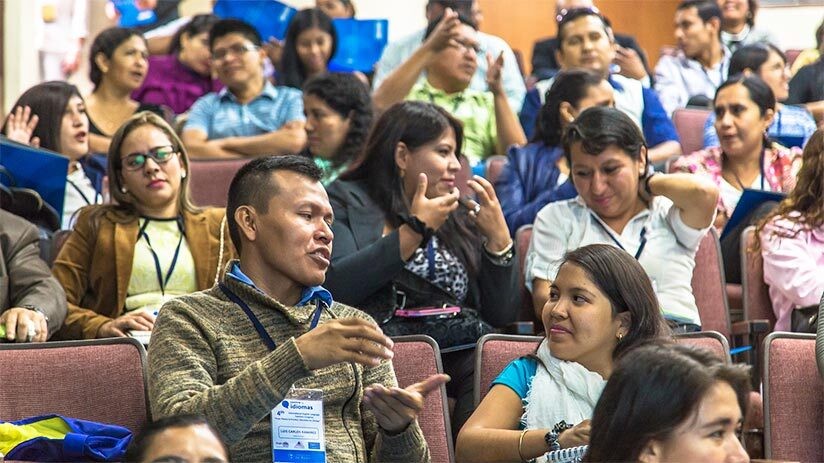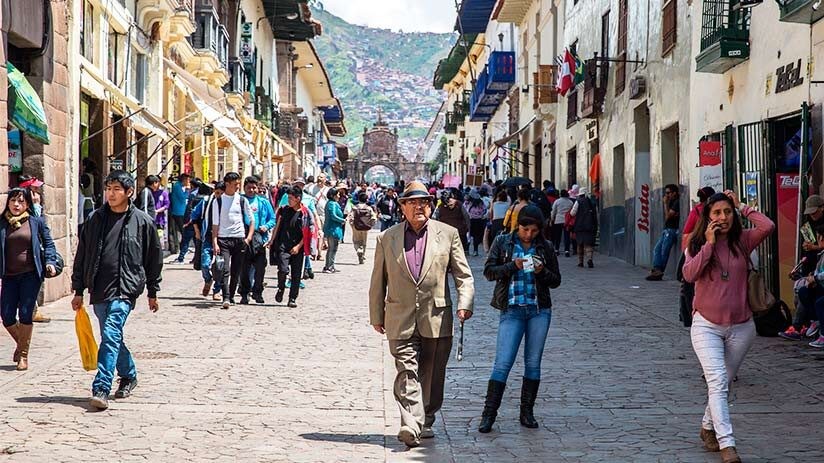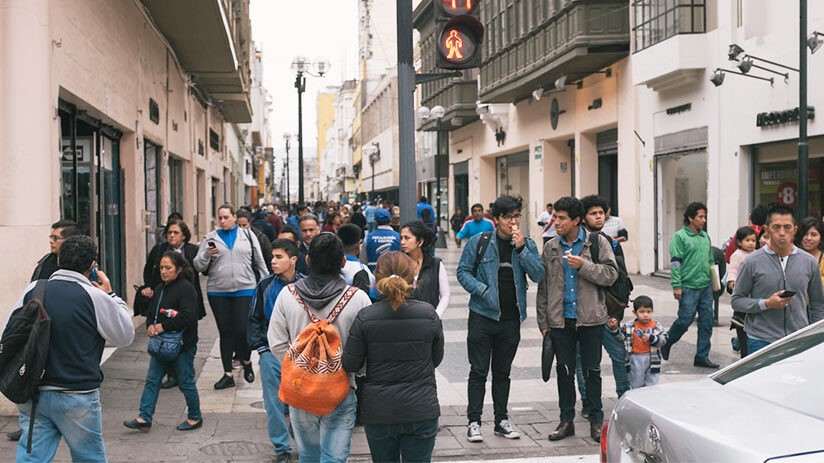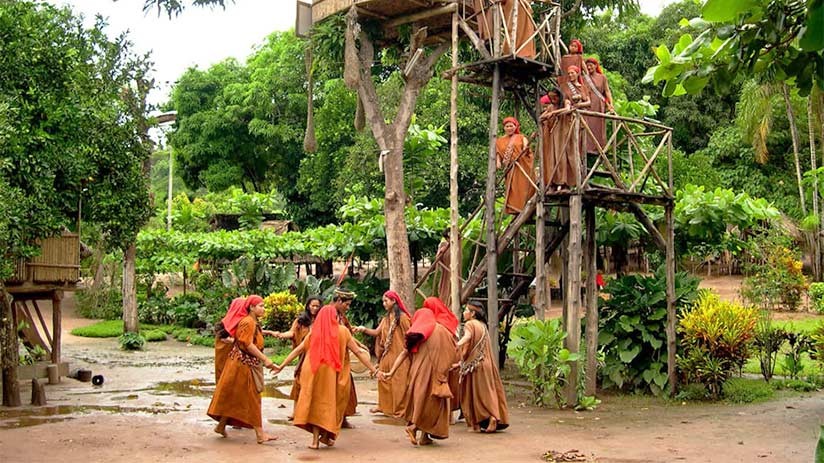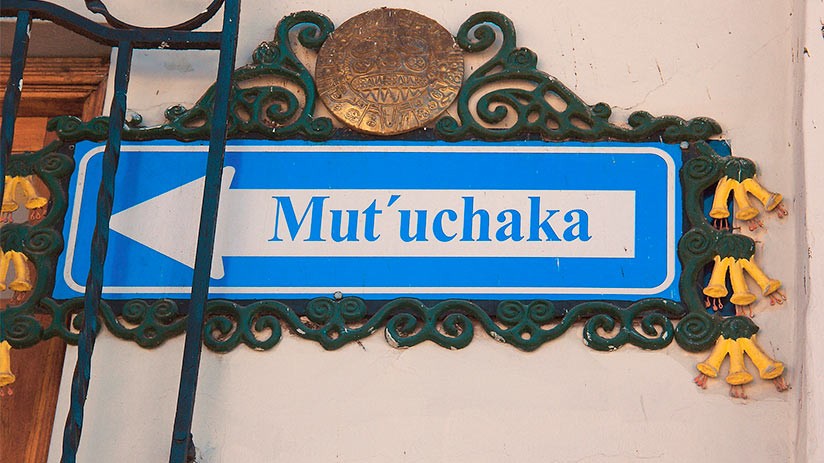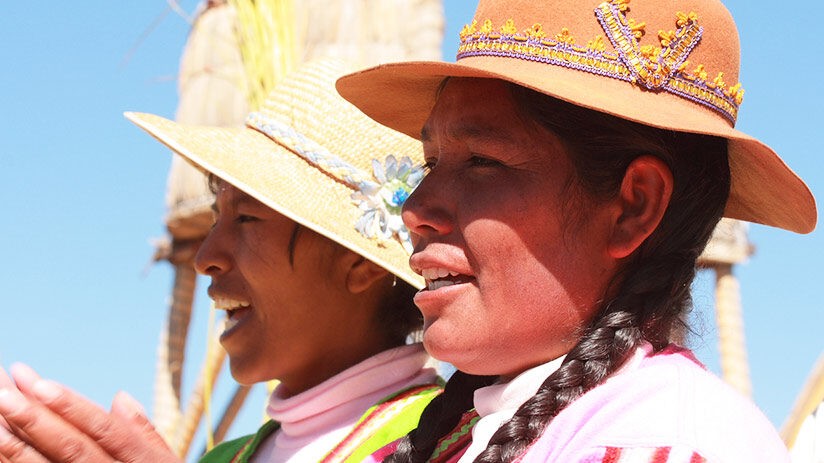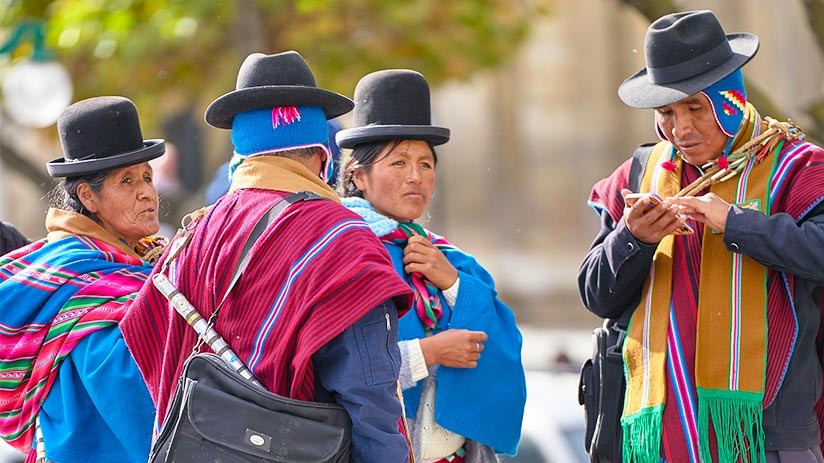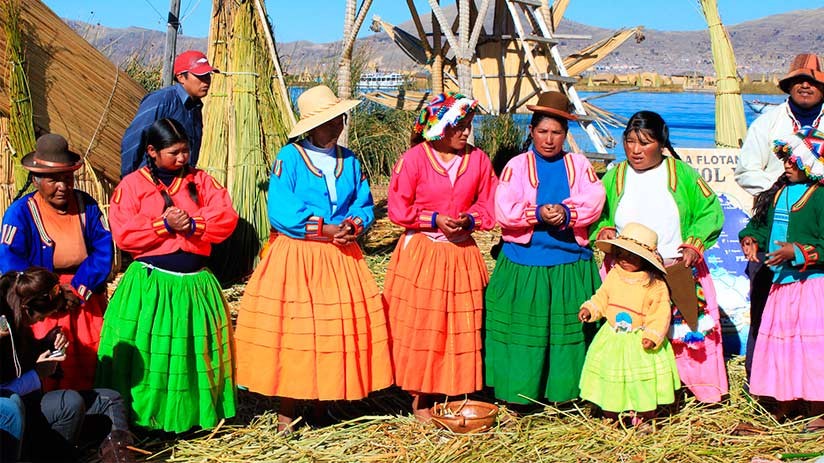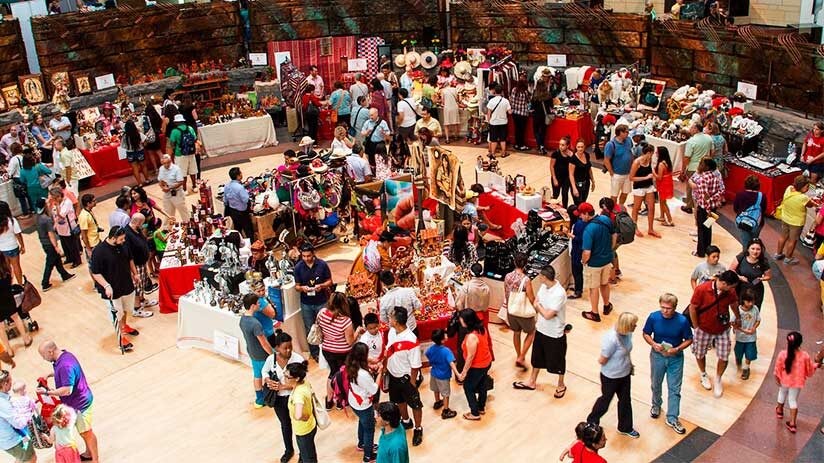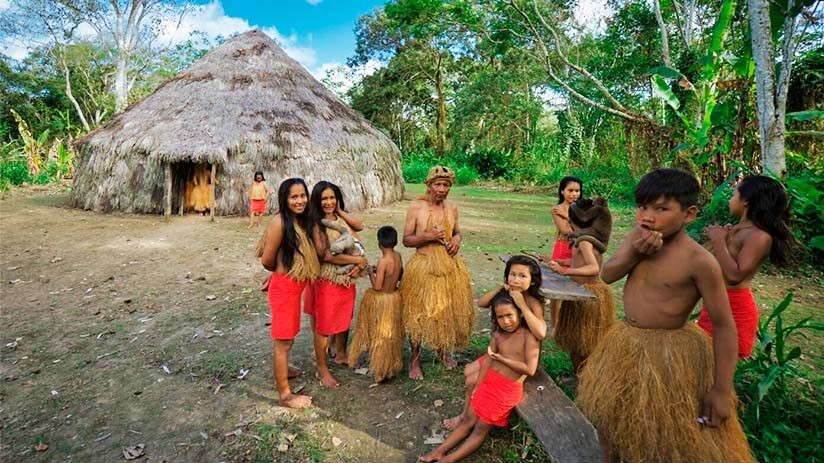Are you curious about the languages spoken in Peru? Spanish is the official language, but Peru boasts a rich linguistic tapestry. At WHAT.EDU.VN, we provide free answers to your questions, exploring the diverse languages and dialects of Peru, from Spanish and Quechua to Aymara and Amazonian languages. Discover the cultural significance and unique characteristics of Peruvian languages.
1. What Is the Main Language Spoken in Peru?
Spanish is the predominant language spoken in Peru, with approximately 82% of the population using it. However, Peru recognizes other official languages, including Quechua and Aymara, reflecting its diverse cultural heritage. Quechua is spoken by around 13% of Peruvians, while Aymara is used by about 2%.
Peru is a multilingual country with a rich linguistic history. Beyond Spanish, Quechua, and Aymara, there are numerous indigenous languages spoken in various regions. This linguistic diversity is a testament to Peru’s cultural mosaic and historical roots.
2. How Many Languages Are Spoken in Peru?
While Spanish is the most widely spoken language, Peru is home to a multitude of languages. While approximately 82% of Peruvians speak Spanish, around 15% of the population speaks a language other than Spanish, with Quechua being the second most prevalent. There are dozens of indigenous languages, each with its own dialects and variations, spoken in different regions of the country.
Peru’s linguistic diversity is primarily found in the Andes and the Amazon rainforest. These regions are home to various indigenous communities, each with its unique language and cultural heritage.
3. Where Are Different Languages Spoken in Peru?
The distribution of languages in Peru varies geographically. Spanish is primarily spoken in urban areas, particularly along the coast. Indigenous languages are more prevalent in rural and remote areas, such as the Andes and the Amazon rainforest.
- Coastal Region: Predominantly Spanish speakers, with limited presence of indigenous languages.
- Andes: Quechua, Aymara, and other indigenous languages are widely spoken alongside Spanish.
- Amazon Rainforest: Home to a diverse range of indigenous languages, including Asháninka and Aguaruna.
4. What Are Some Common Peruvian Slang Words?
Peruvian Spanish is rich with slang and colloquial expressions. Here are a few common examples:
- “Chibolo” or “Muchacho“: Boy or youngster
- “Churro,” “Papasito,” “Guapo“: Good-looking
- Suffix “-Ito“: Added to words as a term of affection (e.g., “Papito” for father, “Mamita” for mother)
- “Pachamama“: Inca word for Mother Earth
- “Pata“: Friend or member of a group
Learning a few slang words can enhance your interactions with locals and provide a deeper understanding of Peruvian culture.
5. What Are the Regional Variations of Spanish in Peru?
The Spanish language in Peru has regional variations, influenced by local dialects and indigenous languages. The main regional variants include:
- Andean Spanish: Spoken in high-altitude cities and the Andes, characterized by clear pronunciation and influence from Quechua and Aymara.
- Coastal Spanish: Spoken along the coast, with faster pronunciation and unique intonation. Northern coastal Spanish borrows vocabulary from Caribbean countries.
- Amazon Spanish: Spoken in the Amazon region, known for its sing-song intonation and influence from numerous native dialects.
5.1. Andean Spanish
Andean Spanish, spoken in cities like Cusco and Puno, is noted for its clear pronunciation and slower pace. The accentuation often falls on the last vowels, and the “s” sound has a distinct intonation similar to some regions in Spain. This variant is heavily influenced by Quechua and Aymara, incorporating sounds and words from these languages.
5.2. Coastal Spanish
Coastal Spanish, prevalent in cities such as Lima and Trujillo, features a faster pace and a higher intonation. In the southern coastal regions, the “h” sound is often inhaled (e.g., “jilera” becomes “ilera”), and the “ll” is pronounced like “sh.” The northern coastal variant shares similarities but also incorporates influences from Caribbean Spanish due to migration.
5.3. Amazon Spanish
Amazon Spanish stands out with its unique sing-song intonation. This variant is influenced by over 70 native dialects spoken throughout the Peruvian Amazon, resulting in a melodic and distinctive accent. Each pronunciation is well-intonated, making it easily distinguishable from other Spanish variants.
6. What Is the History and Significance of the Quechua Language in Peru?
Quechua, the language of the Inca Empire, has been granted official language status in Peru. This language, primarily spoken in the Andes, lacks a written form and is known for its complex sounds. Despite Spanish attempts to suppress it, Quechua has survived for over 500 years and is spoken by a third of Peru’s population, mainly in the mountainous regions.
Quechua is more than just a language; it’s a symbol of indigenous identity and cultural resilience. The language’s survival is a testament to the determination of the Quechua-speaking communities to preserve their heritage.
6.1. The Evolution of Quechua
Quechua has evolved significantly since the time of the Inca Empire. Today, there are different variants spoken in various regions of the country. Despite these variations, Quechua remains a vital part of Peru’s cultural identity, with efforts to promote and preserve the language.
6.2. Efforts to Preserve Quechua
In recent years, there have been increased efforts to promote and preserve the Quechua language. Former President Alejandro Toledo launched a campaign to teach Quechua in schools, which has been successful in many areas. These efforts aim to ensure the language’s survival and promote cultural pride among Quechua speakers.
7. What Are Some Basic Quechua Words and Phrases?
Learning a few Quechua words can enrich your experience in Peru. Here are some basic terms:
- Yes: Riki
- No: Mana
- Mother: Mama
- Father: Tayta
- Thanks: Añay
Even a basic understanding of Quechua can help you connect with local communities and show respect for their culture.
7.1. Regional Variations in Quechua
It’s important to note that there are many subdivisions and variants within the Quechua language family. Speakers from different regions may find it difficult to communicate with each other due to these variations. For example, a Quechua speaker from northern Peru may have difficulty understanding someone from Cusco or Puno.
8. What Is the History and Significance of the Aymara Language in Peru?
Aymara is another significant language in Peru, primarily spoken in the southern regions around Puno and Lake Titicaca. It is also prevalent in northern Bolivia and Chile, with approximately three million speakers. While similar to Quechua, Aymara has distinct differences and a unique pronunciation.
Aymara, like Quechua, is an official language of Peru and a symbol of indigenous identity. Efforts are ongoing to preserve and promote the language, ensuring its continued vitality.
8.1. The Origins of Aymara
The Aymara language originally consisted of symbols, mainly pictures of people or things. These symbols represented the objects they portrayed, but they varied widely and were never standardized. Today, Aymara is a spoken language with efforts to create a written form.
8.2. Other Indigenous Languages
In addition to Quechua and Aymara, Peru is home to many other indigenous languages, including Jaqaru, Ashaninka, Aguaruna, Axinica, Caquinte, and Machiguenga. While not as widely spoken as Spanish, Quechua, or Aymara, these languages are an essential part of Peru’s cultural heritage.
9. What Are Some Basic Aymara Words and Phrases?
Learning a few Aymara words can enhance your interactions with local communities in southern Peru. Here are some basic terms:
- Hello, how are you?: Kamisasktasa
- Hello: Kamisaki
- Good Humor, Kind regards, Joy, Humor: Jallalla!
- Hug: Qhuma
- Snake: Amaru
Even a small effort to learn Aymara can demonstrate respect for the local culture and create meaningful connections.
9.1. Varieties of Aymara
Similar to Quechua, Aymara also has different varieties. In Peru, there are two main types: Central Aymara, spoken only in Puno, and South Aymara, spoken in the regions of Madre de Dios, Lima, Tacna, Moquegua, and Puno. These variations reflect the diverse linguistic landscape of Peru.
10. Why Does Peru Have So Many Native Languages?
Peru’s linguistic diversity is a result of its complex geography, biodiversity, and cultural history. The country’s varied landscapes and climates have fostered the development of distinct cultures and languages over centuries.
When the Spanish invaded the Inca kingdom in 1533, they were unable to reach all parts of the country, particularly the remote areas of the Andes and the Amazon rainforest. These regions remained isolated, allowing indigenous languages to survive and evolve independently.
10.1. The Influence of Geography
Peru’s diverse geography has played a significant role in its linguistic diversity. The towering Andes Mountains and the dense Amazon rainforest have created natural barriers that isolated communities and allowed languages to develop independently.
10.2. The Role of the Inca Empire
The Inca Empire, which once stretched across much of South America, also contributed to Peru’s linguistic diversity. The Incas promoted the Quechua language as a lingua franca, but many other languages continued to be spoken within the empire’s borders.
11. Are Native Languages Spoken in Other Countries?
Yes, many of Peru’s native languages are spoken in other Latin American countries. For example, the Quechua language is spoken by over 9 million people across the continent, including in Bolivia, Ecuador, and northwestern Argentina. Similarly, Aymara is spoken in parts of Chile, Argentina, and Bolivia.
These languages predate the modern political boundaries of South America, reflecting the shared cultural heritage of the region’s indigenous communities.
12. What Is Being Done to Preserve Endangered Languages in Peru?
In recent years, there has been growing concern about the loss of indigenous languages in Peru. According to the Peruvian Ministry of Culture, over 35 indigenous languages are believed to have disappeared in the last 40 years.
To combat this trend, the government has taken action to document and preserve indigenous languages. These measures include registering the alphabet of each language and developing educational materials for schools. The goal is to promote intercultural bilingual education and ensure the survival of Peru’s linguistic heritage.
12.1. The Role of the Ministry of Culture
The Peruvian Ministry of Culture plays a key role in preserving indigenous languages. The ministry supports research, documentation, and promotion of these languages, working closely with indigenous communities to develop culturally appropriate educational materials.
12.2. Community-Based Initiatives
In addition to government efforts, many indigenous communities are taking their own initiatives to preserve their languages. These initiatives include language nests for young children, cultural festivals, and the use of indigenous languages in local media.
13. How Can Learning About Peruvian Languages Enhance My Travel Experience?
Learning about the languages of Peru can greatly enhance your travel experience. It allows you to connect with local communities on a deeper level, show respect for their culture, and gain a greater understanding of the country’s history and heritage.
Even learning a few basic words in Quechua or Aymara can make a big difference in your interactions with locals. It shows that you are interested in their culture and willing to make an effort to communicate in their language.
13.1. Cultural Immersion
Learning about Peruvian languages is a form of cultural immersion. It allows you to go beyond the surface and gain a deeper understanding of the country’s rich and complex cultural landscape.
13.2. Connecting with Locals
Speaking even a few words in a local language can help you connect with people on a more personal level. It shows that you are interested in their culture and willing to make an effort to communicate in their language.
14. What Are Some Resources for Learning Peruvian Languages?
If you are interested in learning more about Peruvian languages, there are many resources available online and in libraries. These resources include:
- Language learning apps and websites
- Textbooks and dictionaries
- Online courses and tutorials
- Language exchange partners
You can also find opportunities to study Peruvian languages in person at universities and language schools.
14.1. Online Resources
There are many excellent online resources for learning Peruvian languages. These resources include language learning apps like Duolingo and Memrise, as well as websites that offer lessons, tutorials, and dictionaries.
14.2. In-Person Classes
If you prefer to learn in a classroom setting, you can find opportunities to study Peruvian languages at universities and language schools. These classes offer a structured learning environment and the opportunity to interact with other students and instructors.
15. What Role Do Languages Play in Peruvian Identity?
Languages play a crucial role in shaping Peruvian identity, reflecting the nation’s rich cultural heritage and diverse history. Spanish, as the most widely spoken language, serves as a unifying force, facilitating communication and integration across different regions and communities. However, indigenous languages such as Quechua and Aymara hold immense cultural significance, representing the ancestral roots and traditions of indigenous populations.
These languages are not merely tools for communication but are also symbols of cultural resilience and identity. They embody the unique worldviews, customs, and knowledge systems of indigenous communities, preserving their distinct heritage for future generations. The preservation and promotion of indigenous languages are therefore essential for safeguarding Peru’s cultural diversity and fostering a sense of national pride.
15.1. Language as a Symbol of Cultural Pride
For many Peruvians, their native language is a symbol of cultural pride. It connects them to their ancestors, their community, and their unique way of life. The preservation of indigenous languages is seen as essential for maintaining cultural identity and preventing the erosion of traditional knowledge.
15.2. Bilingualism and Interculturalism
Peru is increasingly embracing bilingualism and interculturalism, recognizing the value of both Spanish and indigenous languages. Bilingual education programs are designed to promote fluency in both languages, allowing students to participate fully in both the national culture and their own cultural heritage.
Peru’s linguistic landscape is a vibrant tapestry woven from diverse threads. Understanding and appreciating these languages is essential for gaining a deeper understanding of the country’s rich cultural heritage. Whether you’re planning a trip to Peru or simply curious about its languages, we hope this guide has been informative and inspiring.
Are you fascinated by the linguistic diversity of Peru and eager to learn more? Do you have questions about specific languages, dialects, or cultural traditions? Visit WHAT.EDU.VN today to ask your questions and receive free answers from our experts! We’re here to help you explore the wonders of Peru and its rich cultural heritage. Contact us at 888 Question City Plaza, Seattle, WA 98101, United States, or via WhatsApp at +1 (206) 555-7890. Visit our website at what.edu.vn and start your journey of discovery today!
FAQ: Languages Spoken in Peru
| Question | Answer |
|---|---|
| What is the official language of Peru? | Spanish is the primary official language, but Quechua and Aymara are also recognized as official languages in regions where they are prevalent. |
| How many people speak Quechua in Peru? | Approximately 13% of Peru’s population speaks Quechua. |
| Is Aymara similar to Quechua? | While both are indigenous languages, Aymara and Quechua have distinct differences in pronunciation and grammar, although they share some vocabulary. |
| Where is Aymara primarily spoken in Peru? | Aymara is mainly spoken in the southern regions of Peru, particularly around Puno and Lake Titicaca. |
| Are there endangered languages in Peru? | Yes, many indigenous languages in Peru are endangered due to factors such as globalization and language shift. Efforts are being made to preserve and revitalize these languages. |
| Does the Peruvian government support indigenous languages? | Yes, the Peruvian government supports indigenous languages through bilingual education programs, documentation efforts, and promotion of cultural heritage. The Ministry of Culture plays a key role in these initiatives. |
| Can I travel in Peru knowing only English? | While English is not widely spoken, particularly in rural areas, you can manage in tourist destinations. Learning some basic Spanish is highly recommended for a more enriching experience. |
| What is Andean Spanish? | Andean Spanish is a variant of Spanish spoken in the highlands of Peru, influenced by Quechua and Aymara. It features clear pronunciation and a slower pace. |
| How many languages were documented in Peru in the 16th century? | According to historical records, more than 150 indigenous languages were documented in Peru during the 16th century by Jesuit missionaries. This reflects the country’s rich linguistic diversity at that time. |
| What is the Ministry of Culture doing to preserve endangered languages? | The Ministry of Culture is documenting and preserving indigenous languages by registering their alphabets and developing educational materials. They also promote intercultural bilingual education to ensure the survival of these languages. |
